
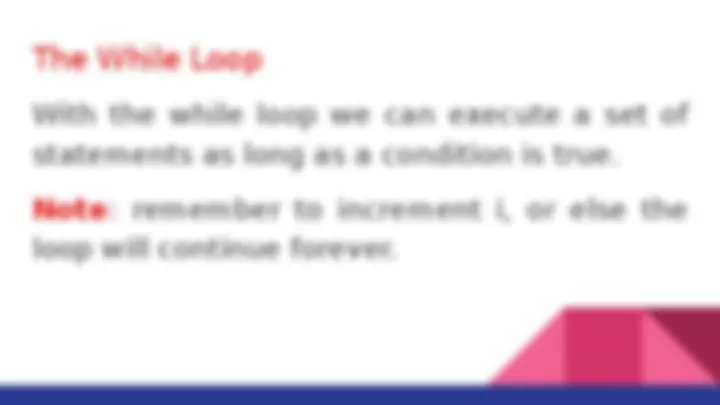
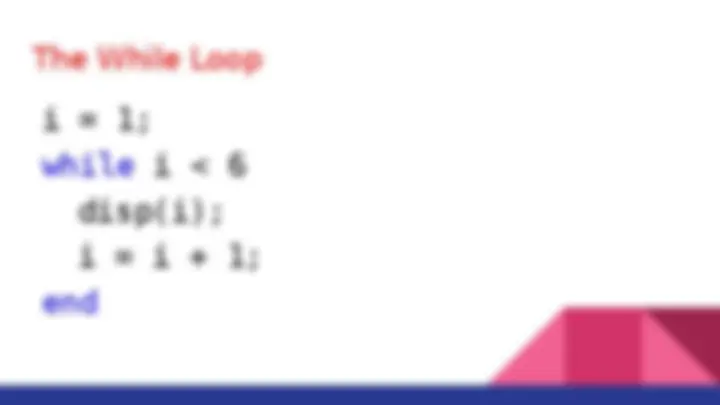
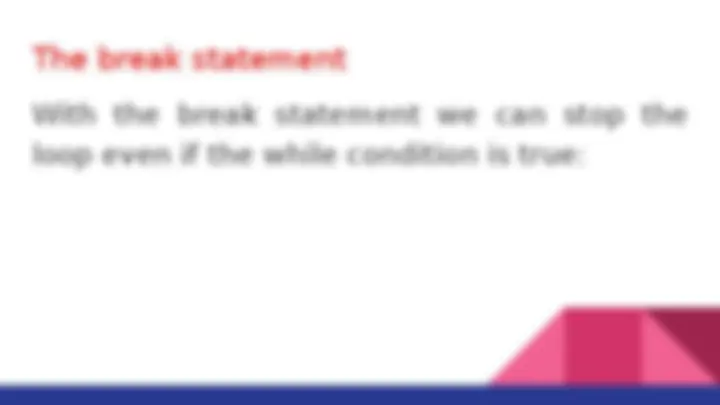
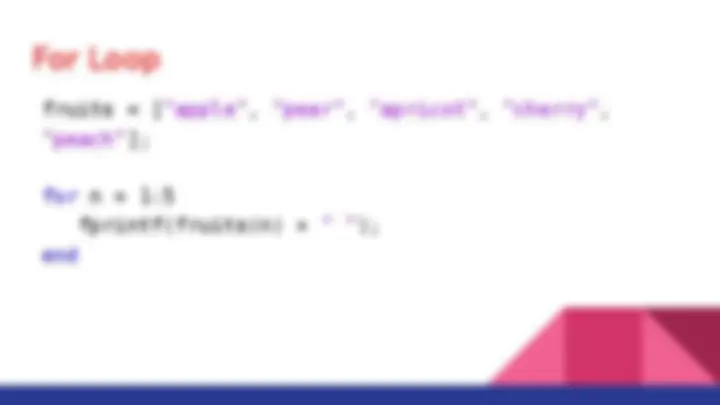
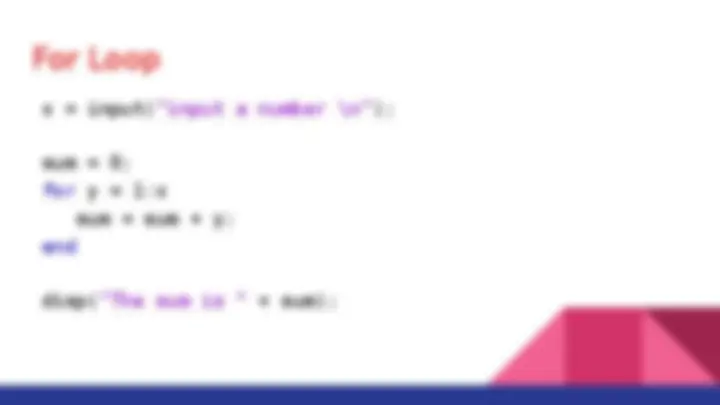
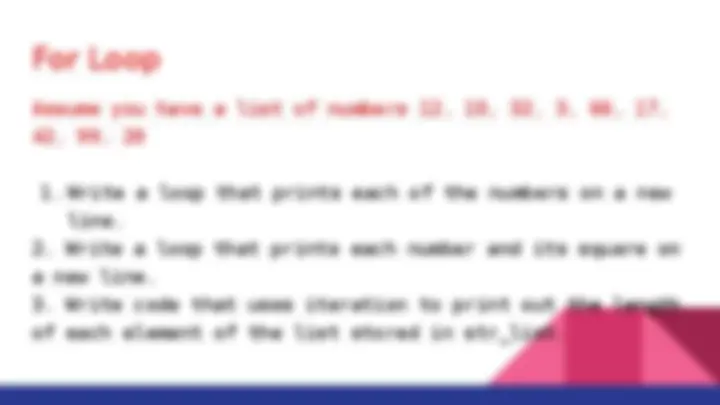


Study with the several resources on Docsity

Earn points by helping other students or get them with a premium plan


Prepare for your exams
Study with the several resources on Docsity

Earn points to download
Earn points by helping other students or get them with a premium plan
Community
Ask the community for help and clear up your study doubts
Discover the best universities in your country according to Docsity users
Free resources
Download our free guides on studying techniques, anxiety management strategies, and thesis advice from Docsity tutors
All the topics that the Loops will cover. Unlock it and see it yourself; I will ensure it will help you.
Typology: Lecture notes
1 / 10

This page cannot be seen from the preview
Don't miss anything!







i = 1; while i < 6 disp(i); i = i + 1; end
With the break statement we can stop the loop even if the while condition is true:
Assume you have a list of numbers 12, 10, 32, 3, 66, 17, 42, 99, 20